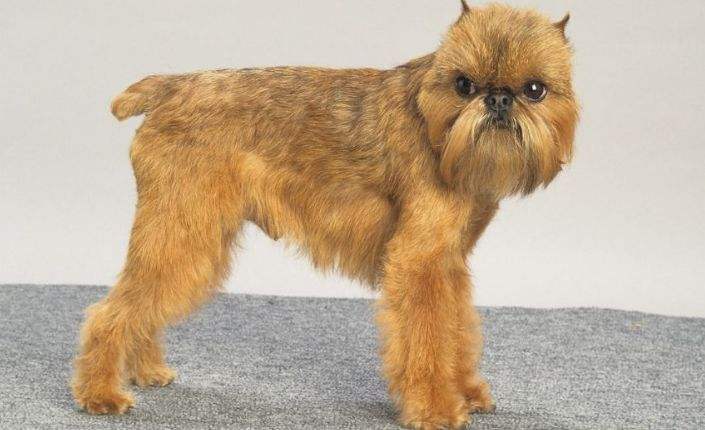Griffon Bruxellois
IUCN
LCBasic Information
Scientific classification
- name:Griffon Bruxellois
- Scientific Name:Brussels Griffon,Belgian Griffon, Short-haired Petit, Barbazar, Belgian Rough-haired Hound
- Outline:Carnivora
- Family:Canidae
Vital signs
- length:18-20cm
- Weight:2.5-5.5kg
- lifetime:13-15year
Feature
Belgium's most iconic toy dog
Distribution and Habitat
Originally from Belgium
Appearance
The face is covered with long, strong hair, the chest is broad and deep, and covered with short hair. The feet are small, round and compact, with black pads (Belgian Coarse-haired Pointer). The dog has a small, black nose, set deep in the back between the eyes, and a large red beard on the face, which gives it an intelligent look. The forelimbs are muscular, strong and powerful, with a strong coat, which is longer than that of the Belgian Coarse-haired Pointer. The straight hind legs are typically bent at the knees (Brussels Coarse-haired Pointer), and the forehead is clearly semicircular, which is associated with an increased risk of epilepsy. The chin is naturally prominent, prominent and open. The large, wide-set eyes are prominent and surrounded by black circles, and the ears are small, set fairly high and semi-erect. The coat is smooth, similar to that of the Pug (Miniature Brabancon).
There are two different coats: wire-haired and short-haired. Apart from the difference in coa
Details
The Brussels Griffon originated in Belgium.

In 1880, the Belgian local dog was bred after mating with the pug. It has a pug-like muzzle and short hair, and also has the bloodline of the German monkey face dog. It has become the favorite dog of the Belgian royal family. By the 19th century, people felt fashionable to have this dog sitting in a carriage next to the rider. What's more, it can also prevent rats in the stable at night, so it is also called "the winged lion of the stable". It gives people the impression of being virtuous and intelligent, with a gentle and bright temperament. From noble people to ordinary people, everyone loves this dog and praises it for its charm different from other beautiful toy dogs. It is a representative toy dog in Belgium.
Since 1883, the Belgian Dog Dealers Club has established a first-class association and recorded this dog. The standard of the dog breed was established in 1905. This dog is divided into two types: red long-haired dog and black-haired dog. There is only one dog breed in North America and the United Kingdom, but it is divided into three types on the European continent. The difference between the long-haired breeds is that the Brussels Griffon has red fur, while the Belgian Griffon does not; the third type is the short-haired Petit, the Barbazar dog.
The Brussels Griffon's value in assisting humans in their work was appreciated long before the European Community was celebrated. It is a classic "European dog" - the result of a mixture of dogs from different regions, resulting in a good natured, amusing, clever and reliable companion. Its names are varied and confusing - in some countries, three similar breeds are considered the Belgian Poodle; in other countries, each of them is considered unique and has its own name (this classification only occurs in Belgium, where there is confusion among the four breeds of Belgian Shepherd Dog). The popularity of the breed reached its peak during the World Wars, with thousands of breeding females in Brussels alone. Today, it has been replaced in popularity by one of its ancestors, the Yorkshire Terrier. But it is still popular in Belgium for rat hunting. The shaggy-faced Stibbean or Ekoli belongs to this category. In order to reduce its size and obtain a small nose, this small hound was crossbred with the English Spanish Toy Terrier in the 19th century, but the result was that it lost its ability to capture wild animals.
There are fewer Brussels Griffons in mainland China, but because of their peaceful appearance, often showing a cheerful look, strong body, easy to raise, they have a promising future. Generally suitable for children, suitable for urban life, difficult to adapt to cold climates, need to comb their coats frequently, easy to train, and easy to get along with other dogs.
Protect wild animals and eliminate game.
Maintaining ecological balance is everyone's responsibility!








